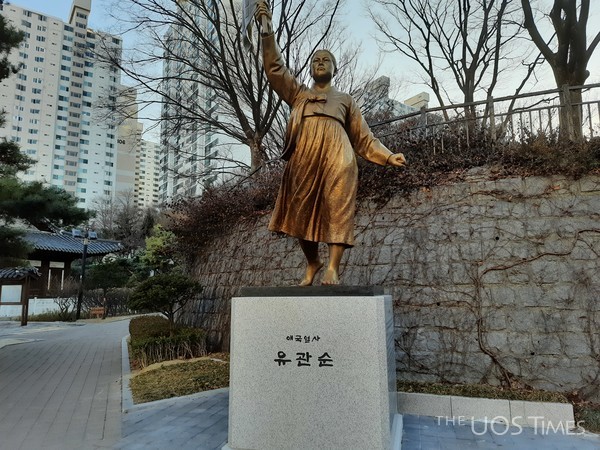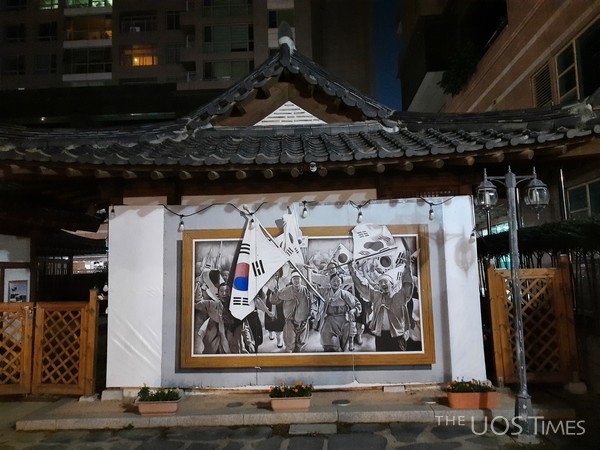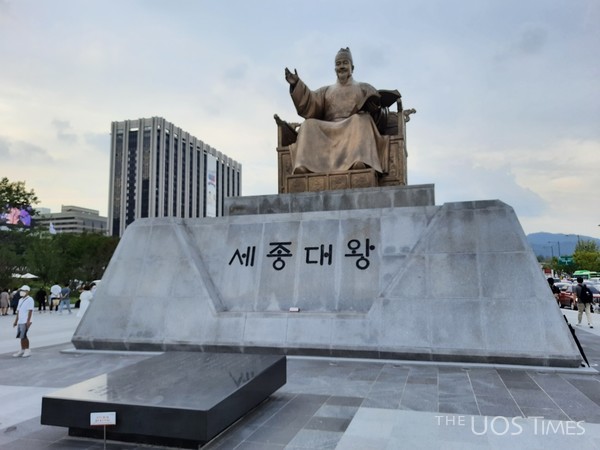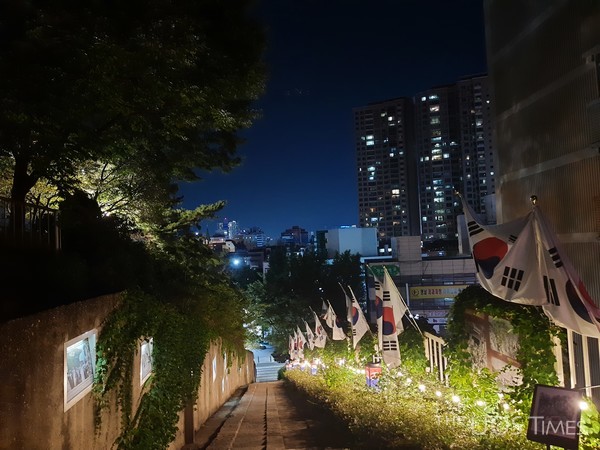Do you know how many public holidays you celebrate in your country in a year? Korea celebrates 16 public holidays which vary from celebrating the harvesting season to celebrating liberation day. The UOS Times is willing to share these holidays with readers.
There are five big national holidays that Koreans celebrate, which are Samiljeol (Independence Movement Day, in English), Gwangbokjeol (Liberation Day, in English), Gaecheonjeol (National Foundation Day, in English), Hangeul Day, and Jeheonjeol (Constitution Day, in English). During these days, celebrations are held with the South Korean flag being raised all across the country to celebrate national values and identity.
Samiljeol commemorates the March 1st Movement in 1919. The March 1st Movement was a protest movement by Korean people calling for their independence from Japan and protesting forced assimilation into the Japanese way of life. Approximately 2 million Koreans participated in more than 1,500 demonstrations. It was reported that 7,509 people died, 15,849 were wounded, and 46,303 were arrested. Many historical figures of the Korean independence movement, such as Yu Gwan-sun, were a part of these independence protests. For this reason, this day is also marked as the day the Korean independence movement ignited.

Gwangbokjeol is a national holiday to commemorate August 15th, 1945, the day on which the country was finally liberated from thirty-five years of Japanese colonial rule.

Gaecheonjeol commemorates the founding of the Korean nation by the legendary god-king Dangun on October 3rd. Foundation Day in 2022, which is the year 4355 according to the Dangun calendar, celebrates the nation's 4,354th anniversary. When the Korean national commemorative day was designated to commemorate the nation’s foundation by Dangun, the day was named "Gaecheonjeol," which means "opening sky day." Following the establishment of the Provisional Government of the Republic of Korea in Shanghai in 1919, the newly formed government held a commemorative event on October 3rd for the "Gaecheonjeol.” After the country’s liberation from Japan, and the establishment of an official Korean government, the National Foundation Day was designated as a national commemorative day while also changing the date of October 3, which until then had been based on the lunar calendar, to be based on the solar calendar. Alongside Chuseok and other cultural holidays, National Foundation Day is the only culture-political holiday that is celebrated both in North and South Korea.
Hangeul Day is a national holiday held on October 9th to commemorate the invention and proclamation of “Hunminjeongeum” (The Proper Sounds for the Instruction of the People, in English), or Hangeul, the Korean alphabet, by the 15th century Korean King Sejong the Great, and celebrate its excellence. Just like many cultural holidays, Hangeul Day is also celebrated in North Korea on January 15th. Though Hangeul Day has been a national commemorative day since 1945, it became a national holiday in 1970. However, from 1990 to 2012, Hangeul Day was only conducted as a national commemoration day without a holiday, to support the government's push for maximized business days to expedite industrial growth. After the changes in 2012, it has been celebrated as a national holiday again.

There was another public holiday called Jeheonjeol. It had been held on July 17th to celebrate the enactment of the Constitution of the Republic of Korea on July 17th, 1948, and to promote a law-abiding spirit among the Korean people while protecting the Constitution. However, in 2008, Constitution Day was excluded from the roster of public holidays, but it has retained its status as a national commemorative day.

Jeheonjeol is not alone when it comes to the ex-holidays that are not celebrated as holidays anymore. Singmogil (Arbor Day, in English) was a holiday that was celebrated on April 5th. The idea of Singmogil was to celebrate forestry and the development of national history. April 5th was chosen for its historical significance since that was the day Silla achieved the unification of the Three Kingdoms of Korea. Singmogil was designated as a holiday by presidential decree in 1949, but in 1960, Singmogil's status as a holiday was abolished, and April 5th was treated as any other day. However, the following year, the official status of the holiday was restored, to be abolished again in 2006.
However, there is also a holiday on which flags are flown at half-staff. Hyeonchungil (Memorial Day, in English) is celebrated on June 6th. Memorial Day serves to honor the soldiers and civilians who dedicated their lives to their country. While memorial services are held nationwide, the largest ceremony takes place at the National Cemetery in Seoul. At 10 a.m. on Memorial Day, a siren rings all over the country, and people have silent prayers for one minute. The South Korean flag is flown at half-staff to honor people who devoted their lives to their country.
Even though Korea officially follows the Gregorian calendar today, there are traditional holidays that are still based on the lunar calendar, since Korea was an agrarian society throughout history. Just like in any agrarian societies during that period, Koreans relied on the movements of the Moon to plant and harvest crops. Thus, movements of the Moon created the traditional holidays Koreans celebrate today.
Seollal (Lunar New Year, in English) is one of the most important traditional holidays of the year; the holiday is much more significant than January 1st of the solar calendar. During its 3-day long holiday, most businesses close, and people take several days off from work to visit their hometown and spend some time with their family. Feasts are held with specially prepared food such as tteokguk (rice cake soup, in English) and manduguk (dumpling soup, in English). Korean families also spend time together by playing traditional games such as yunnori (traditional Korean board game, in English), flying kites, or spinning tops.
Just like Seollal, Chuseok (Korean thanksgiving, in English) is also celebrated in the lunar calendar. Chuseok means "the Full Moon Day in the eighth month," or "the middle of August" of the lunar calendar, and is also one of the most important traditional holidays of the year. It is celebrated on the 15th day of the 8th lunar month. Chuseok is a day set to celebrate a bountiful harvest. Family members gather from all over the country for memorial rituals at the graves of their ancestors, while also feasting on traditional food. It is a three-day public holiday all across the country.
However, with a changing society, the activities that used to be the core element of the holidays started changing too. In the past, during family meetings, the elderly would give some cash to the kids. With the developing technology, the introduction of simple money transaction services such as Kakaopay became an easier alternative than cash. Even the elderly who are unfamiliar with the internet and mobile devices are increasingly using these mobile apps because of their ease of use. In addition to this, sending gifts through mobile apps is also becoming increasingly popular. Rather than giving gifts offline, people also started to send gifts such as movie or flight tickets, or small emoji packs for Kakaotalk.
Another thing that has been changing with Chuseok is the charye (ancestral rites, in English) that has been causing diverse social conflicts as seen as “holiday syndrome," and discrimination against women. For married women, Chuseok is not a break from family chores. They become busier than ever with the added responsibility of preparing food for their in-laws throughout the holidays. Many of them are stressed out because of their memories of being used in a fashion they describe as "slave labor," and of getting into disputes with their in-laws. In response to the holiday blues among married women due to excessive food preparation, a group dedicated to preserving the traditions of Confucian culture and rituals unveiled a set of guidelines for a streamlined Chuseok table this year. The Sungkyunkwan Commission for Correcting Rituals announced new standards for setting up ritual tables. The commission aims to improve complex, impractical traditions, and disseminate the changes to the public. The commission said only nine dishes will be sufficient for the ritual. It refuted the need to make "jeon," Korean traditional pancakes which require heavy preparation. The commission also rebuffed the principle of "Hong Dong Baek Seo," placing red fruit on the east side, and white fruit on the west on the memorial table.
Before 2013, national holidays that fell on a Saturday or Sunday were not substituted on the following workday. However, the Regulation on Closure Days for Public Offices was introduced to substitute several overlapping holidays such as Seollal, Chuseok, and Eorininal. Thanks to the Regulation on Closure Days for Public Office, more and more people stopped going to their hometowns during Seollal and Chuseok and started going for a short vacation for the holidays, enjoying the traveling itself, or taking a break by themselves. One of the reasons for this is that Koreans are working way too much compared to other countries. Based on 2019 OECD reports, Koreans worked 1,967 hours a year, 241 hours more than the OECD average of 1,726 hours. Working for so long, or having too much pressure at work or school, make these 3-day long holidays a paradise for some people. Rather than spending these small holidays for the sake of tradition, more and more people started to spend their free time for themselves, thus creating the situation above.
How many Korean holidays did you know before reading this article? Has the holiday culture in your country also been changing? Did you find this topic interesting? Please let The UOS Times know your thoughts, and see you next time.

